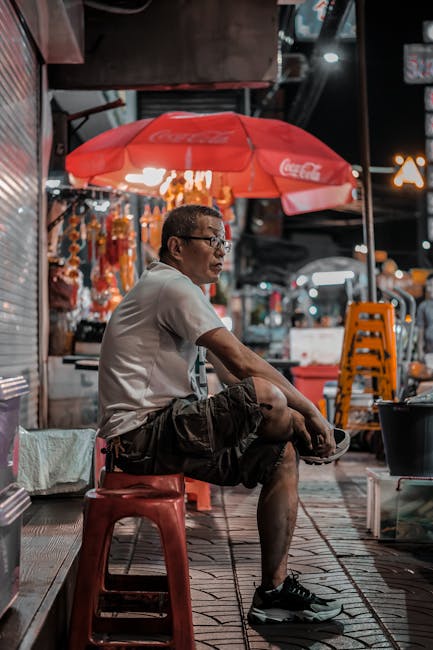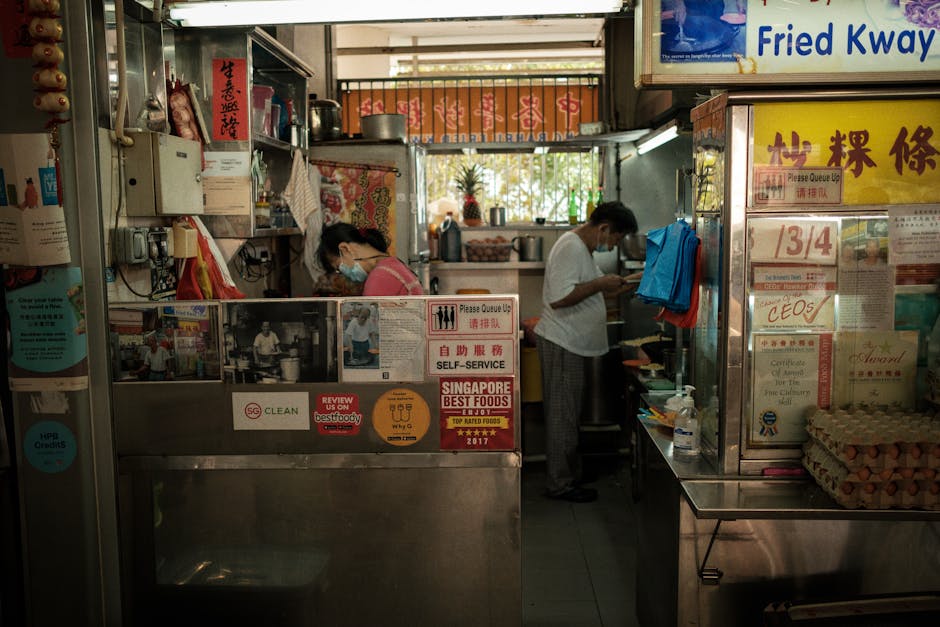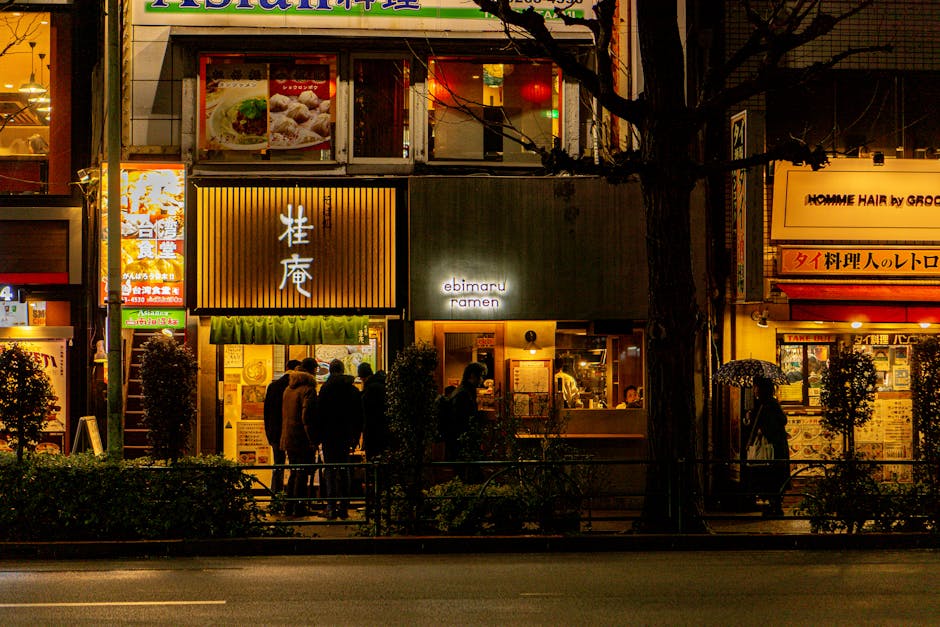If you want to truly understand the soul of a culture, follow your taste buds to its street food markets. Nowhere is this more true than in Southeast Asia, where centuries-old culinary traditions merge with innovative flavors in bustling, fragrant marketplaces. From Thailand's night bazaars to Vietnam's morning food streets, these vibrant hubs offer authentic, affordable, and utterly delicious insights into local life. Join us as we explore the region's most exceptional street food destinations and share tips for an unforgettable culinary adventure.
Thailand: The Street Food Capital
Thailand's reputation as a street food paradise is well-deserved, with Bangkok consistently ranking among the world's top street food cities.
Yaowarat (Bangkok's Chinatown)
After sunset, Yaowarat Road transforms into a neon-lit gastronomic wonderland. Follow your nose along the main road and smaller sois (alleys) to discover:
- Oyster omelettes (hoy tod) - Crispy on the outside, gooey within
- Seafood in all forms - From grilled river prawns to spicy crab curries
- Kway chap - Rice noodle rolls in a peppery broth with pork offal (not for the faint-hearted but beloved by locals)
- Durian and other exotic fruits - Perfect for dessert, if you're brave enough to try the "king of fruits"
Local tip: Look for stalls with stainless steel tables and plastic stools - these often serve the most authentic dishes. The best vendors open around 6 pm, but come early as popular spots sell out quickly.

Chiang Mai Night Bazaar & Sunday Walking Street
Northern Thailand's culinary capital offers distinctive flavors influenced by Burma and Laos:
- Khao soi - A Chiang Mai specialty of curried noodle soup topped with crispy noodles
- Sai oua - Herb-packed northern Thai sausage
- Nam prik noom - Roasted green chili dip served with vegetables and sticky rice
- Mango sticky rice - The quintessential Thai dessert, especially delicious in mango season (March-June)
Where to go: While the Night Bazaar operates daily, the Sunday Walking Street along Ratchadamnoen Road offers the most extensive food options, with entire sois dedicated to food stalls and impromptu dining areas in temple grounds.
Vietnam: A Sidewalk Dining Culture
In Vietnam, the boundary between restaurant and street stall blurs. Tiny plastic stools spill onto sidewalks as locals and travelers alike hunch over steaming bowls of noodles and fragrant grilled meats.
Hanoi's Old Quarter
The compact streets of Hanoi's ancient heart offer specialized food zones:
- Phở - Vietnam's iconic breakfast soup, best enjoyed at Phố Bát Đàn where locals queue before dawn
- Bún chả - Grilled pork with vermicelli noodles, famously sampled by Anthony Bourdain and Barack Obama
- Egg coffee (cà phê trứng) - A dessert-like drink created during milk shortages
- Bánh mì - French-influenced baguette sandwiches filled with pâté, pork, and pickled vegetables
Local tip: Many Hanoi street food stalls operate on strict schedules, opening only for breakfast or lunch. Research specific stall hours before setting out, or join a morning street food tour to hit multiple spots during their prime times.
Ho Chi Minh City's District 1 and 4
Southern Vietnam's commercial hub offers bolder flavors and more varied influences:
- Cơm tấm - "Broken rice" topped with grilled pork, fried egg, and fish sauce
- Ốc - Snail and shellfish dishes, best found in District 4's specialized "Snail Street"
- Bánh xèo - Crispy rice flour pancakes filled with pork, shrimp, and bean sprouts
- Chè - Sweet dessert soups with beans, jellies, and coconut cream

Where to go: The streets around Bến Thành Market offer convenient tastings, but for more authentic experiences, head to Vườn Chuối Street for breakfast or the seafood stalls along Vĩnh Khánh Street in District 4 after dark.
Malaysia: Multicultural Food Havens
Malaysia's multicultural identity—Malay, Chinese, Indian, and Peranakan (Straits Chinese)—creates one of Southeast Asia's most diverse street food scenes.
Penang's George Town
This UNESCO-listed city is widely considered Malaysia's culinary capital:
- Char kway teow - Flat rice noodles stir-fried with seafood, sausage, and bean sprouts
- Assam laksa - Penang's iconic sour fish soup with tamarind
- Nasi kandar - Rice served with various curry options at Indian Muslim stalls
- Cendol - Shaved ice with green rice flour jelly, coconut milk, and palm sugar
Where to go: Gurney Drive Hawker Centre offers sea breezes with your dining, while the New Lane Hawker Centre provides a more local experience. The stalls along Kimberley Street come alive in the evening.
Kuala Lumpur's Jalan Alor
The Malaysian capital's famous food street transforms from quiet thoroughfare to open-air restaurant at dusk:
- Satay - Skewered meats with peanut sauce
- Wong ah wah's BBQ chicken wings - A local institution
- Durian - Sample Malaysia's prized varieties if you're curious about this controversial fruit
- Teh tarik - "Pulled tea" with condensed milk, poured between vessels to create froth
Singapore: Hawker Centre Excellence
Singapore has elevated street food culture through its system of regulated hawker centres—food markets with high hygiene standards but preserved authentic flavors.
Maxwell Food Centre
Located in Chinatown, this hawker centre houses some of Singapore's most famous stalls:
- Hainanese chicken rice - Singapore's national dish from the renowned Tian Tian stall
- Char siu (Cantonese BBQ pork) - Perfect over rice
- Poh piah - Fresh spring rolls with jicama, egg, and dried shrimp

Old Airport Road Food Centre
Less touristed but beloved by locals for classics like:
- Hokkien mee - Stir-fried noodles with prawns and squid
- Lor mee - Noodles in a thick, starchy gravy
- Satay bee hoon - Vermicelli noodles in spicy peanut sauce
Local tip: Look for the longest queues at hawker centres—Singaporeans are willing to wait for quality food. Also, "choping" (reserving) a table with tissue packets is common practice during busy periods.
Essential Street Food Safety Tips
Enjoying street food can be perfectly safe if you follow these guidelines:
- Look for busy stalls - High turnover means fresher ingredients
- Watch for clean preparation - Vendors should handle raw and cooked foods separately
- Choose freshly cooked food - Items cooked to order at high heat are safest
- Be cautious with raw items - In some areas, it's best to avoid uncooked vegetables or fruit you can't peel yourself
- Bring hand sanitizer - Facilities for handwashing may be limited
- Stay hydrated - But stick to bottled water or beverages made with boiled water
Navigating Dietary Restrictions
Southeast Asian street food can accommodate various dietary needs:
- Vegetarians/Vegans: Look for Buddhist vegetarian stalls ("jay" food in Thailand) or Indian vegetarian vendors in Malaysia and Singapore. Vietnam's Buddhist vegetarian restaurants ("chay") often have street food options.
- Gluten-Free: Rice-based dishes and noodles made from rice flour are widely available. Be cautious of soy sauce in marinades and seasonings.
- Halal Requirements: Malaysia and Singapore have numerous certified halal vendors. In Thailand, look for Muslim-owned stalls, often near mosques.
Learn key phrases to communicate your dietary needs in the local language—most vendors will try to accommodate if they understand your requirements.
Street Food Etiquette
Respect local customs when dining at street food markets:
- Wait your turn in queues—cutting in line is frowned upon
- In communal seating areas, it's acceptable to share tables with strangers
- Use the provided utensils (often chopsticks, spoons, or hands depending on the dish)
- In Thailand, avoid using forks to put food in your mouth (use them to push food onto spoons instead)
- Small tips are appreciated but not expected in most street food settings
Ready to Embark on Your Southeast Asian Food Adventure?
At BigerFoner Travel, we offer specially designed culinary tours throughout Southeast Asia, with expert guides who can introduce you to hidden food gems and explain the cultural significance behind each delicious bite. Our Southeast Asia specialists can create bespoke itineraries highlighting the region's diverse food scenes.
Plan Your Culinary JourneyThe street food markets of Southeast Asia offer far more than just affordable meals—they provide windows into everyday life, cultural traditions, and community gatherings. By bringing your appetite and an adventurous spirit, you'll discover flavors that cookbook recipes can never fully capture and create food memories that will stay with you long after your journey ends.



